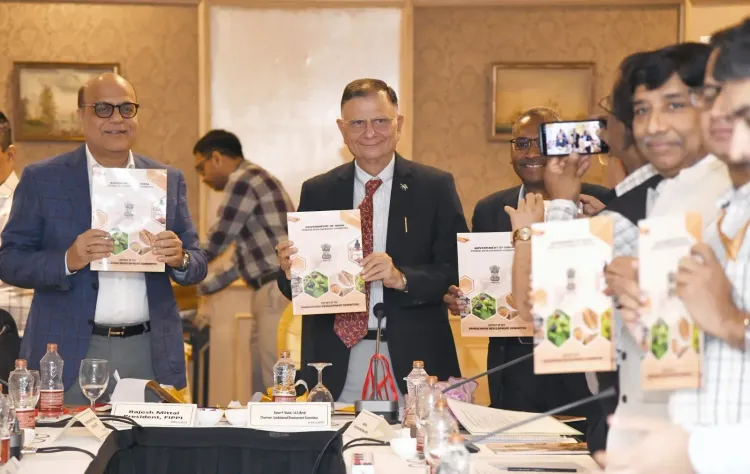What Did the Sandalwood Development Committee Report Unveil?

Synopsis
Key Takeaways
- Sandalwood farming can generate rural employment.
- Importance of foreign exchange through sandalwood exports.
- Government reforms are necessary to restore sandalwood's past glory.
- Collaboration among multiple ministries is crucial.
- Engagement with stakeholders is key for effective development.
New Delhi, Oct 15 (NationPress) The Report of the Sandalwood Development Committee was unveiled during an event in New Delhi on Wednesday. This significant event was supported by the Federation of Indian Plywood and Panel Industry (FIPPI).
Former Finance Secretary of the Government of India, Ratan P. Watal, presided over the event, which saw the participation of representatives from various central government ministries and departments. Notably, Rajesh Mittal, Chairman and Managing Director of Green Ply Industries Limited and President of FIPPI, was also present.
The Sandalwood Development Committee, led by Ratan Prakash Watal, comprises members from crucial ministries such as the Ministry of Environment, Forests and Climate Change, Ministry of Agriculture and Farmers Welfare, Ministry of Commerce, Ministry of Ayush, and the National Medicinal Plants Board of India. Additionally, representatives from the Institute of Wood Science and Technology in Bengaluru and the Forest College and Research Institute of the Tamil Nadu Agriculture University are included.
According to an official statement, “The cultivation of sandalwood can serve as a foundation for generating rural employment and enhancing foreign exchange through the export of sandalwood and its various by-products. India has the potential to achieve Atmanirbhar status while addressing the sandalwood requirements of society now and in the future. To restore the past glory of Indian sandalwood, several initiatives and reforms will be necessary from both the Central and State Governments.”
To address challenges and propose solutions for sandalwood development across the nation, Watal initiated the formation of this inter-ministerial Sandalwood Development Committee.
The committee engaged in thorough discussions with various stakeholders, including forest departments from major state governments, and recommended a comprehensive set of measures in its report to revitalize sandalwood in India.









